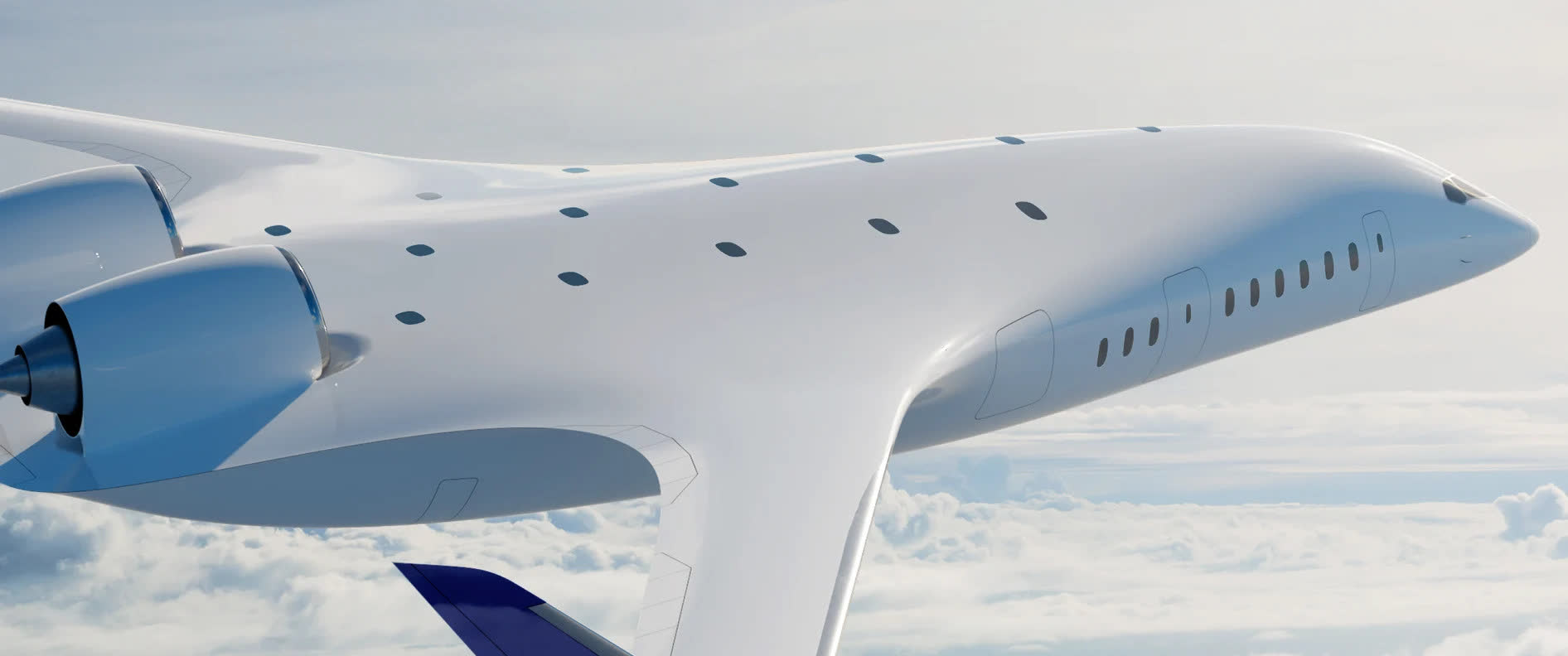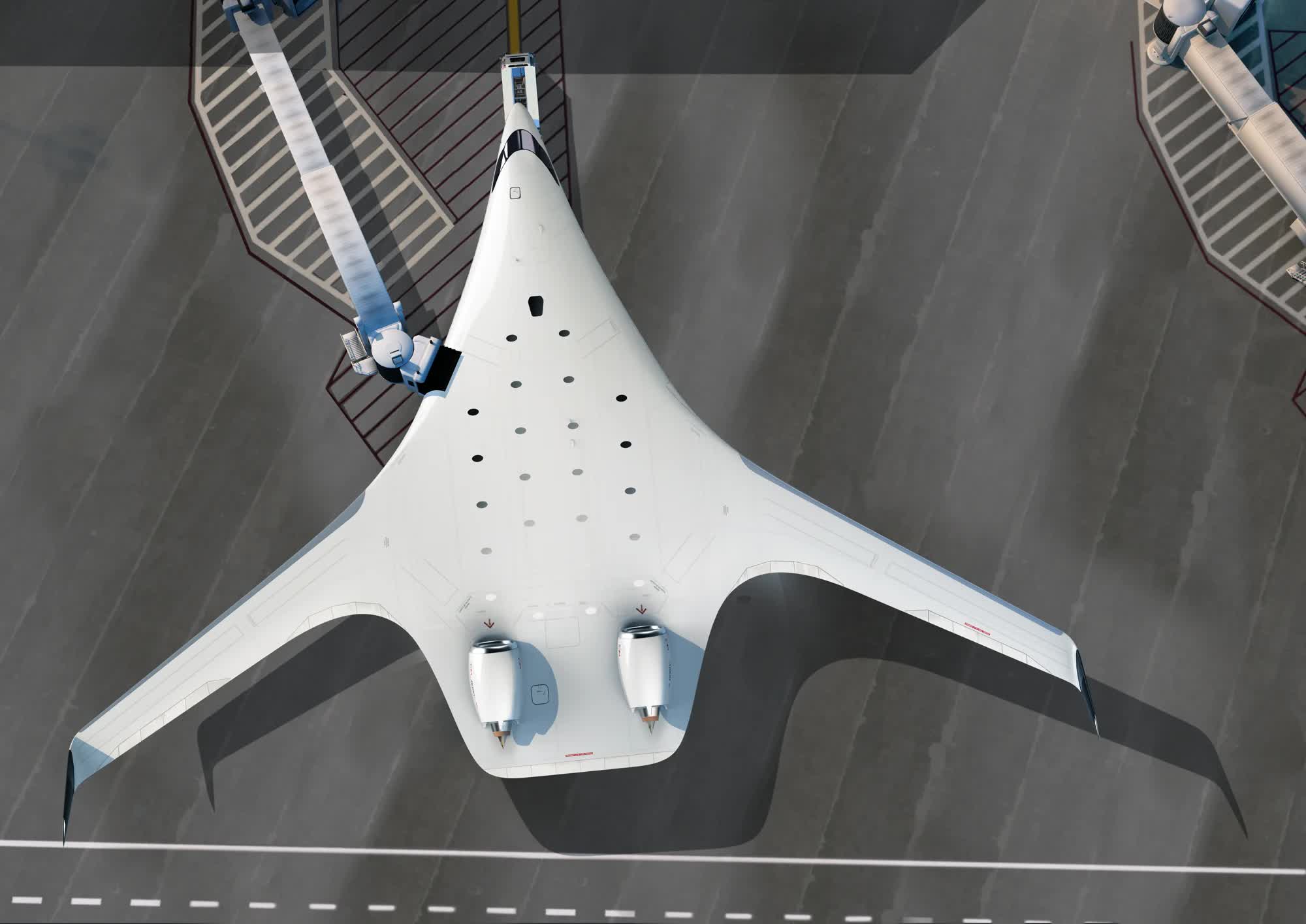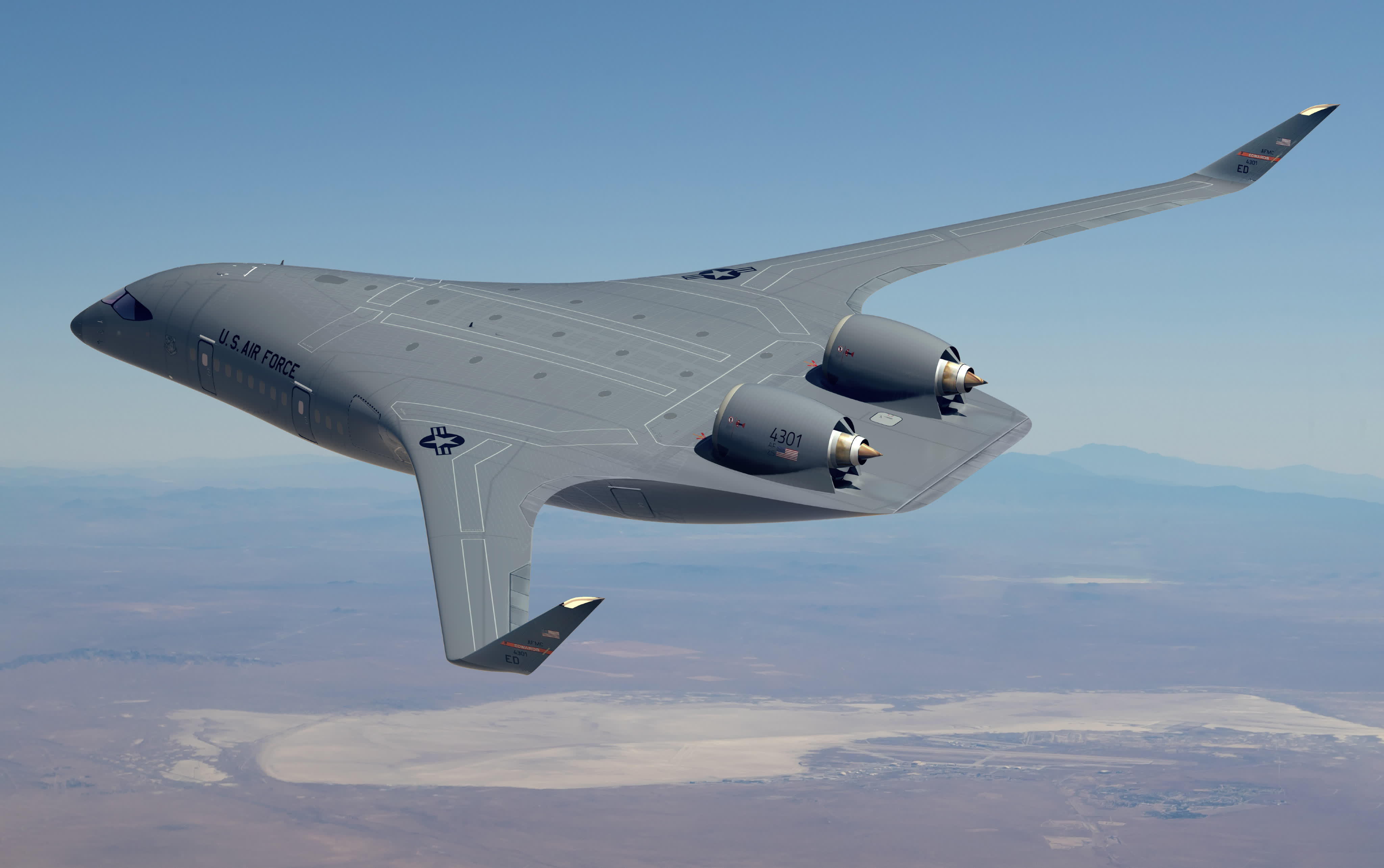Serving tech enthusiasts for over 25 years.
TechSpot means tech analysis and advice you can trust.
Forward-looking: While commercial aviation has made incredible strides in safety and efficiency over the decades, passenger jets have stubbornly adhered to the same fundamental tube-and-wing configuration for nearly a century. While this architecture has proven reliable, it is reaching the limits of its potential. With aviation contributing approximately 2.5% of global carbon emissions, many startups are now exploring radical alternatives.
One such company is JetZero, which, in partnership with engineering giants Siemens and Northrop Grumman, is developing a revolutionary passenger jet design that seamlessly blends the wings into the fuselage.
This concept, known as the "blended wing body," isn't entirely new. It was first proposed over a century ago by Russian aviator Nicolas Woevodsky. However, it has largely remained theoretical, appearing only in a handful of military drone designs.
Once conventional tube-and-wing airliners became the standard, the industry resisted change due to the challenges of certifying a new aircraft shape for passenger use. But JetZero believes the potential benefits of the blended wing body design are too compelling to ignore.
The biggest perk of a blended wing body is its wider, shorter fuselage, which transitions smoothly into the wings to create a single lifting surface. The startup says this reduces aerodynamic drag by up to 30% compared to a traditional tube fuselage. When combined with lighter weight and improved engine integration, JetZero claims their design could slash fuel consumption by 50% compared to today's jets. That's massive.
The blended shape also allows for more interior space. JetZero's concept seats 250 passengers while maintaining a smaller overall footprint than existing single-aisle planes like the Boeing 737, which holds 215. Noise levels are expected to be significantly lower as well.
Perhaps most importantly, JetZero's design is fully compatible with sustainable aviation fuels and has the potential to run on hydrogen, achieving zero emissions as that technology matures.
JetZero plans to conduct its first test flight by 2027 and aims to enter commercial service by 2030. However, the company acknowledges that this is an ambitious timeline for bringing such an unconventional design to market. Notably, JetZero has yet to establish a manufacturing facility for the aircraft.
This is where Siemens comes into play. Announced at CES 2025, the partnership with Siemens will leverage the company's automation hardware, software, and services to create a "Factory of the Future," where the aircraft will be designed, tested, and iterated upon before final production.
In parallel, JetZero is collaborating with Northrop Grumman and the U.S. Air Force to develop a subscale prototype called "Pathfinder." This 23-foot test aircraft has already validated key aerodynamic principles and begun real-world flight control testing. Data from Pathfinder will inform the development of the full-scale aircraft, which will be eight times larger.











 English (US) ·
English (US) ·